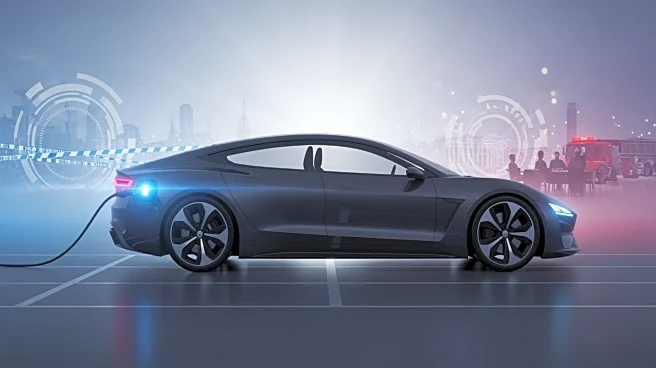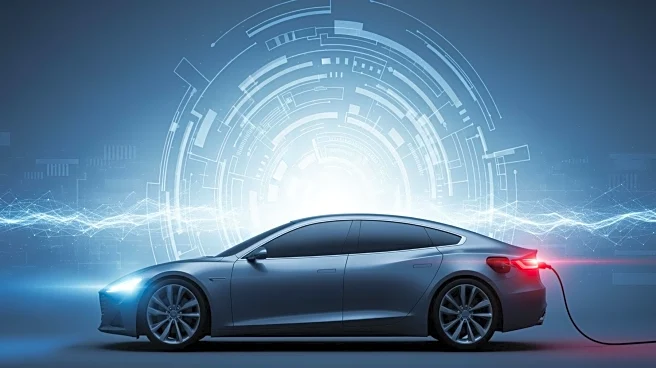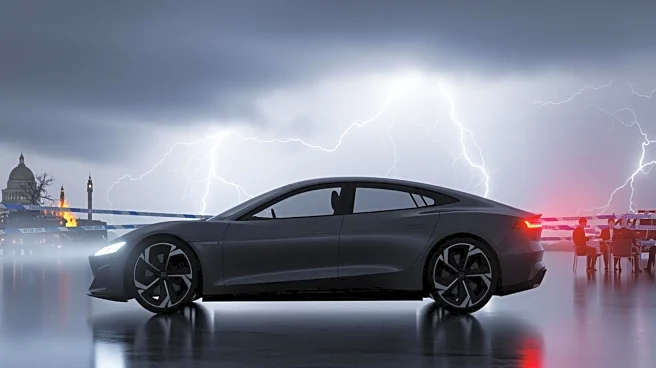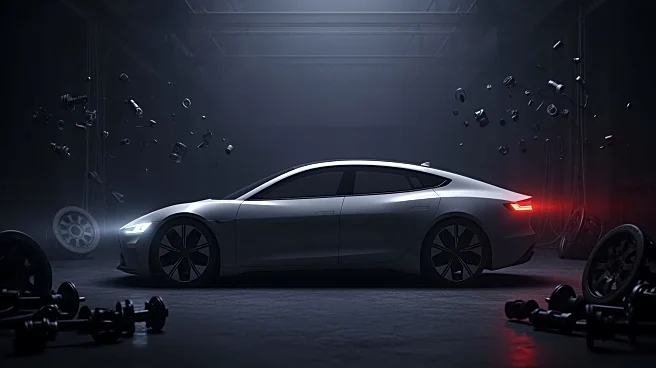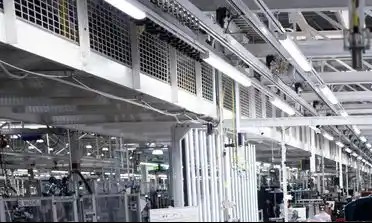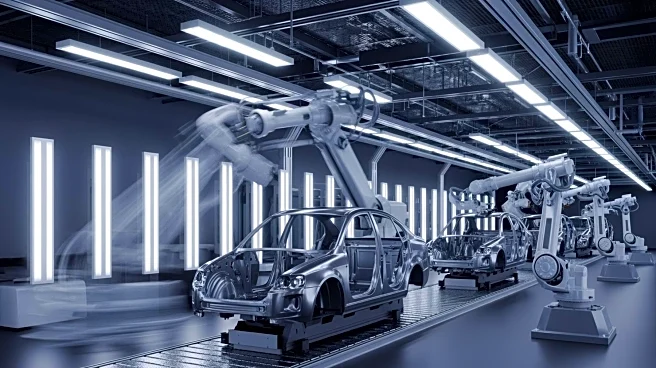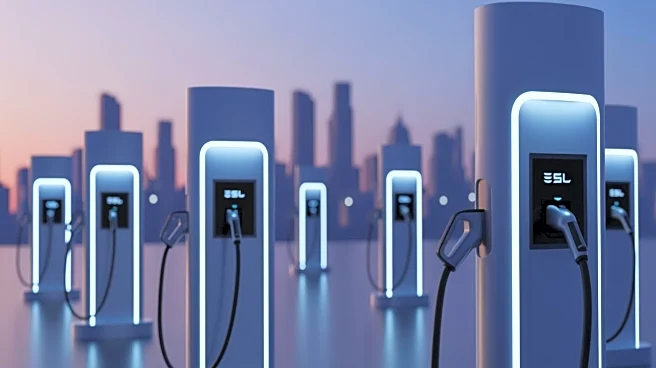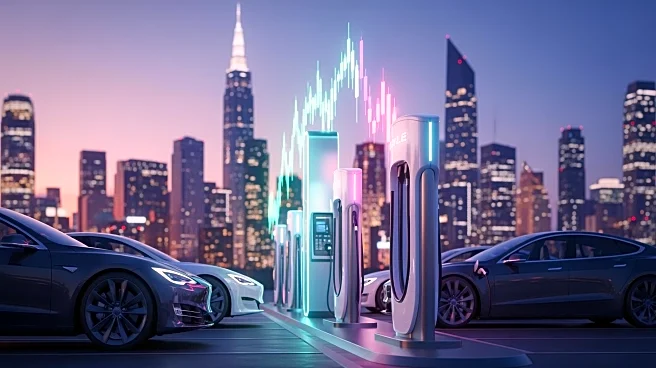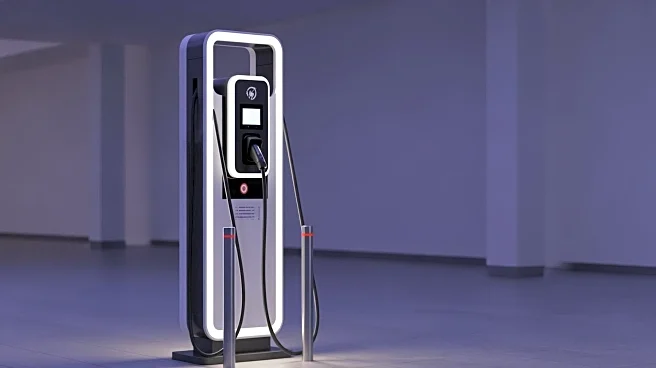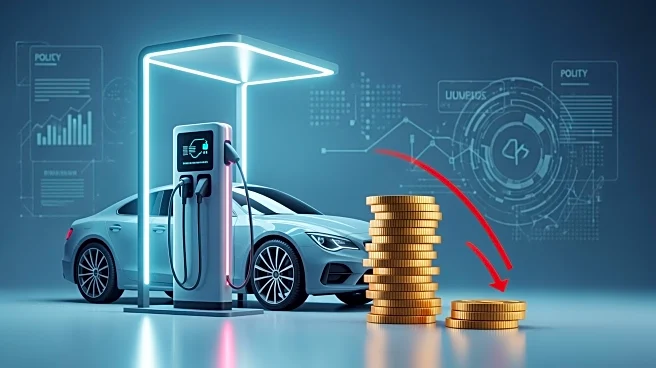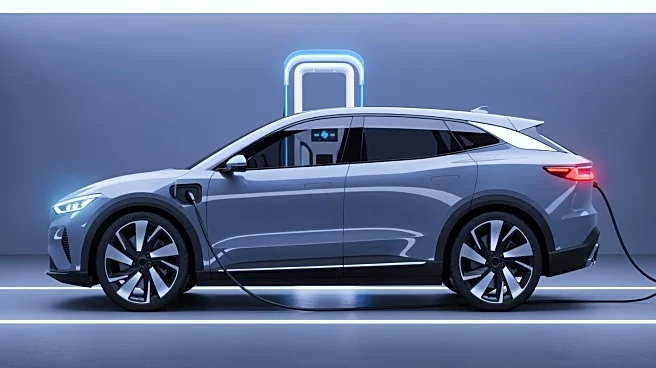What's Happening?
Nissan has introduced the all-new 2026 LEAF EV, marking a significant update to one of the first mainstream electric vehicles in the U.S. market. The new model features a crossover compact SUV design,
inspired by the Ariya EV, and aims to maintain affordability with a starting price in the low $30,000s. Despite the redesign, Nissan faces challenges, including tariffs on Japanese-built vehicles and financial losses. The new LEAF is equipped with a 75-kWh battery offering a 303-mile range and includes Tesla's NACS inlet port for Supercharger access. Nissan aims for a 70% conquest rate, targeting competitors like Tesla.
Why It's Important?
The launch of the 2026 LEAF EV is crucial for Nissan as it seeks to regain market share and improve financial performance. The vehicle's competitive pricing and extended range could attract consumers looking for affordable EV options. However, tariffs imposed by President Trump on Japanese imports could increase costs, affecting pricing strategy. Nissan's financial struggles, including a $4.6 billion loss in fiscal 2024, underscore the importance of the LEAF's success. The company's broader strategy includes releasing 10 new or updated models in North America by 2027, highlighting its commitment to revitalizing its product lineup.
What's Next?
Nissan's future hinges on the success of the 2026 LEAF and its ability to navigate tariff challenges. The company may need to negotiate trade agreements or consider local production to mitigate costs. Additionally, Nissan's plan to cut 20,000 jobs and close several plants by 2027 indicates a strategic shift towards efficiency and profitability. The automotive industry will be watching closely to see if Nissan can leverage the new LEAF to strengthen its position in the competitive EV market.
